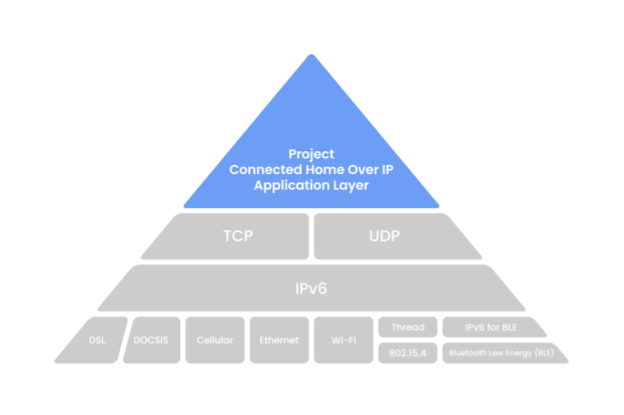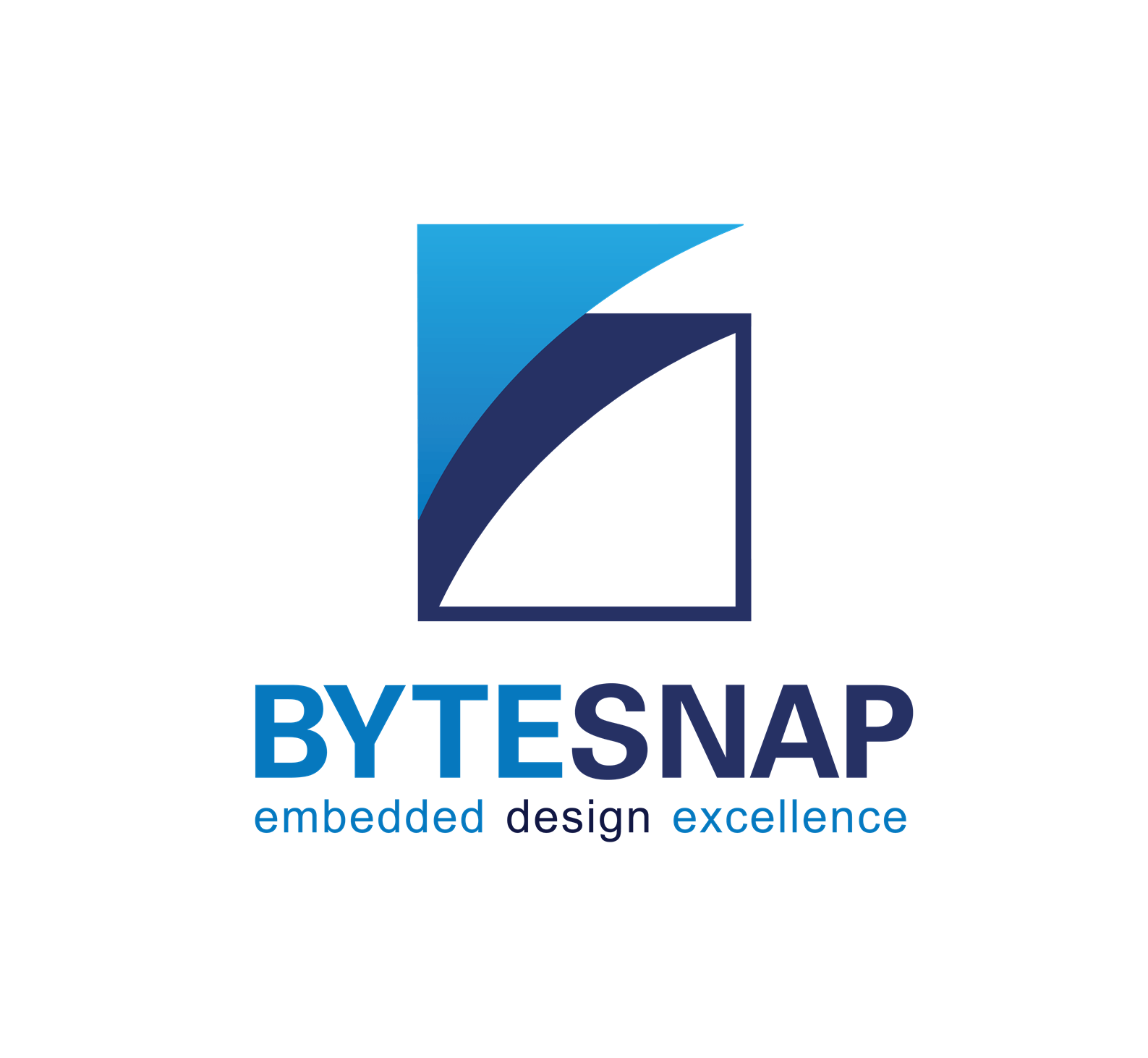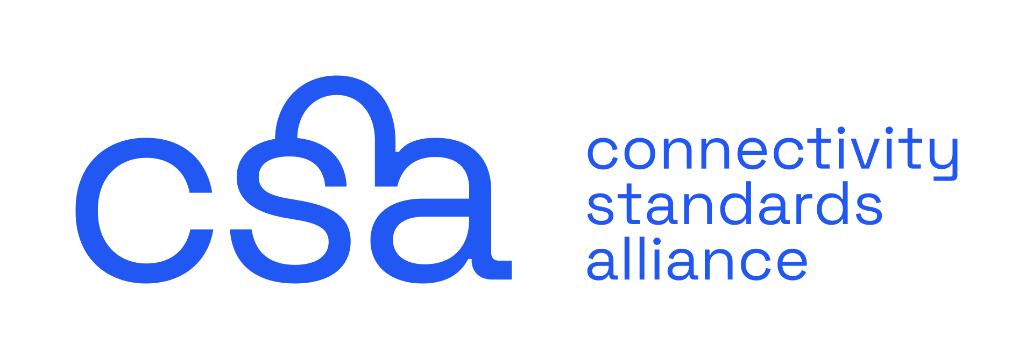A guide to Matter Standard, the protocol for smart home devices
Within the last decade, the Internet of Things (IoT) has gained a lot of traction.
The smart home market alone is now estimated to be worth about $53 billion worldwide.
Many years of significant research and innovation into wireless communication has resulted in the creation of communication protocols like Thread, Apple HomeKit , Samsung Smarthings, IFTTT, Google Home.
Ideally, these standards should co-exist peacefully. Just as the internet was initially developed by smaller networks, the smart home industry is ready for a truly harmonised ecosystem, tying together all other individually-developed networks.
This would make it easier for developers to create new products, increase interoperability, reduce the time to market, and have the consistency and usability benefits of being under one system for end users.
Cue the Matter Standard.

What is Matter Standard?
Matter is an application protocol that sits on top of the IPV6 stack, becoming a universal bridge between devices that have not yet been able to communicate with one another.
The Matter Standard has been flying under the radar since it was first established in December 2019, with the initial catchy-sounding name of Project Connected Home over IP (CHIP).
Since then, its profile has risen considerably with Matter backed by over two hundred companies in Working Group – such as Apple, Google, Amazon, Tesla, LG, Samsung and IKEA.
Why does Matter, matter?
The problem consumers face is the number of different ecosystems they need to have, or the requirement to spend money and compromise on using one ecosystem, which may be missing features they want from another.
They also need to make sure that the devices they buy have the correct protocol to be able to communicate with one another.
A dilemma for developers who will work with Matter is supporting multiple different protocols, as well as their own, to transmit and expose what is largely the same amount of functionality.
This increases overhead on both development costs and the amount of grunt that the system will have to do.
However, with the unification of protocols through Matter, including the use of internet protocol and thread devices, development effort can be streamlined and developers can focus on creating innovative and efficient devices that can easily connect and communicate within its network.
This will ultimately benefit both developers and consumers in the smart home industry, with the help of a compatible mobile app for easy device setup and meeting the necessary software requirements.
In addition, developers can ensure that their devices can be controlled locally without the need for an internet connection or cloud services, providing a more secure and reliable experience for users.
This is made possible by the use of Thread border routers, such as the Apple TV 4K, which act as a bridge between the Matter controller and Thread devices, allowing for seamless communication within the network.
In this scenario, Matter provides an SDK for developers to use a standardised way of communicating, on top of all the protocol layers that will be supported – such as Thread, Zigbee and Wi-Fi.

The technologies behind the Matter Connectivity Standard
Matter, positioned in layer 6 of the OSI model, is not a new wireless protocol, but a connectivity standard that works atop existing standards like Thread, Wi-Fi, Ethernet, Bluetooth, and Zigbee.
With Bluetooth Low Energy for energy efficiency, Thread for reliability, and Wi-Fi for high-speed data transfer, Matter enables seamless communication among smart devices in a home network.
This unified ecosystem fosters efficient interactions between devices. Expect competition among industry giants to develop the best hub integrated with popular smart home assistants like Alexa, Siri, or Google Home.
This unified ecosystem fosters efficient interactions between devices.
Expect competition among industry giants to develop the best hub integrated with popular smart home assistants like Alexa, Siri, or Google Home.
How Amazon, Google, and Apple are Supporting Matter
Amazon, Google, and Apple are pivotal in backing the Matter Standard.
Amazon with its Echo devices, Google through Nest products, and Apple supporting HomeKit extend robust ecosystem support for the standard, including compatibility with Apple’s Siri and other voice assistants.
Their commitment ensures seamless integration and interoperability for consumers, promoting the adoption of compatible smart home devices.
This backing by tech giants propels the standard towards becoming the industry benchmark for smart home connectivity, with the added convenience of controlling devices through Apple’s Siri or other voice assistants.
Key benefits of Matter Standard
Matter will be beneficial to consumers because they will have confidence that the communications between all devices that use the standard will be reliable and secure.
They can also be sure that any certified Matter smart home product will be able to operate and communicate with any supported gateways (hubs), even if the manufacturers are different, much like you can expect any Bluetooth device to be able to communicate to any other Bluetooth device, or how you can expect any Wi-Fi enabled device to be able to connect to your Wi-Fi router.
This interoperability is one of the key benefits of the Matter standard, including local control, making it easier for developers to create smart devices that can seamlessly work with other devices and platforms using a common language.
Additionally, with the integration of Google Assistant and compatibility with Android devices through the Android app, Matter devices can now be controlled using voice commands through Amazon Alexa, Google Assistant on any Android phone, or the Google Home app, providing even more convenience for users, especially those with smart speakers like Amazon Echo, Google Home, or SmartThings hubs.
Another advantage that comes from this interoperability between devices from different manufacturers, is that there will be more competition in the IoT space, as they will no longer be locked into one specific ecosystem, such as Samsung’s SmartThings.
As well as benefiting consumers, this new standard is also a plus for developers and companies creating Matter devices.
The standard is completely open source, improving security and reliability, as anybody is able to read and propose changes to the source code. It is still under its old name project-chip at Github.
There is a reasonable starting step for developers without becoming a partner. The examples provided on Github allow examples with some popular existing devices, such as NXP i.MX range, Silicon Labs EFR range, Linux, Android and more.
The majority of the code base has been provided by Apple and Google, with Silicon Labs coming in with a decent third, most likely due to their major development of the Zigbee protocol, based on the Zigbee Alliance, which has now changed its name to the Connectivity Standards Alliance.
Top-Rated Matter-Compatible Devices
Nordic Semiconductor’s offerings stand out as top-rated compatible devices, ensuring seamless integration with smart home setups.
Other brands including Aqara, Eve and Nanoleaf are becoming more widely known for innovative products that align smoothly with the Matter standard as they prioritise user experience and interoperability.



Matter Standard-compatible custom lighting. Images: Nanoleaf
Matter Standard Smart Home Use Cases
From controlling lights and thermostats with voice commands to seamlessly integrating security systems, Matter standard offers a wide array of applications. Its ability to unify diverse devices under one platform allows for sophisticated automation, enhancing convenience and energy efficiency.
Users can expect a seamless and interoperable experience across various smart devices in their homes.
This standard ensures a streamlined and intuitive smart home experience, making everyday tasks more manageable and enjoyable with the use of a Matter controller such as Google Nest and a smart home platform app.
With the recent launch of the Matter smart home standard and certification program, developers and users can now enjoy the benefits of nine new device types, including —
- air conditioners
- air purifiers
- air quality sensors
- dishwashers, fans
- refrigerators
- robot vacuums
- smoke and carbon monoxide alarms
- washing machines
– -bringing the total to 19 compatible device types.
Wi-Fi 6 and Wi-Fi 6e
You may also have come across Wi-Fi 6 and Wi-Fi 6e, which are not only aimed at ever-increasing data rates and latency improvements, but also at power consumption – much like BLE spinning off from Bluetooth.
Both Wi-Fi 6 and 6e aim to reduce the amount of time that a device needs to use its transceiver, by having the router tell the device when the next time they can expect a packet is, and say that the device is able to sleep until then. This is much like it is implemented in the Thread networking stack.
It will be interesting to see the power requirements of the new modules for sleepy end devices using this new Wi-Fi standard, and how it compares to Zigbee and the other protocols that Matter will support.
Matter is based on IPv6, which could support more devices than there can possibly be MAC addresses (the 48-bit address space for MAC contains over 281 trillion, so we’re unlikely to ever run out).
Connectivity Standards Alliance Costs
Companies will have to pay a certification fee to the Connectivity Standards Alliance (CSA), to be able to develop, test and certify their products as Matter-compatible. This could be seen as reassuring, as it means that only devices which have been properly developed and tested will be out on the market.
However, on top of this, companies will also have to pay – for each product developed to the Matter specification – a licensing fee, and also a recurring annual fee.
Key takeaways
The Matter Standard:
- will make smart homes, but also the other IoT uses within sectors such as smart city, automotive, energy and health, simpler to connect – and should see off small ecosystems which can’t communicate with each other.
- isn’t trying to reinvent the when by replacing existing standards, but instead build on top of them to connect them together.
- makes it easier for software engineers to develop IoT devices, and consumers to buy products which they can have confidence in, that will interoperate with each other over secure and reliable communications.
You’ve learnt about Matter, now what?
A consumer? Try researching various device manufacturers online to see if they are supporting Matter, and whether your existing smart home devices will be in line for a software upgrade.
If you are a manufacturer or innovator seeking help in the smart home industry, or planning to develop any embedded device, and need support with hardware and/or software development, then talk to us.
At ByteSnap, we are expert in most communication protocols, and have completed full Zigbee compliance for a smart meter we developed, the protocol of which will most likely have a significant percentage of usage in the Matter ecosystem.
Get this smart home standard on your devices

Founded in 2008, ByteSnap Design is an award-winning embedded systems design consultancy, offering a comprehensive range of services across the electronic product development lifecycle.
A highly skilled team of over 40 hardware and software engineers, our expertise spans several sectors, including IoT, automotive, industrial, medical, and consumer electronics.
The engineering consultants on the ByteSnap Editorial Team share their knowledge and practical tips to help you streamline your product development and accelerate designs to market successfully.
With their deep technical expertise and practical experience, they aim to provide valuable insights and actionable tips to guide you through the complex world of electronic product design and development, to help you bring innovative, reliable, and secure electronic products to market quickly and cost-effectively.





